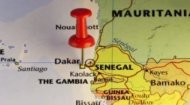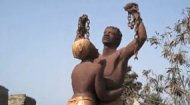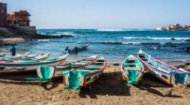|
Beyond the port, Dakar's economic landscape is diverse. It serves as Senegal’s financial hub, hosting the headquarters of major banks, insurance companies, and the regional stock exchange (BRVM – Bourse Régionale des Valeurs Mobilières), which serves eight West African countries. The service sector, including telecommunications, IT, and professional services, is a rapidly growing contributor to the GDP, reflecting a push towards a knowledge-based economy. Construction is a perpetual boom industry, driven by urbanisation and infrastructure development, with new high-rises and commercial complexes continually reshaping the skyline.
The social profile of Dakar is an exhilarating fusion of tradition and modernity, characterized by its renowned "Teranga" – the Wolof word for hospitality, a cornerstone of Senegalese culture. This philosophy permeates daily interactions, creating a welcoming and friendly atmosphere that visitors often find captivating. The city is a melting pot of ethnic groups, including the dominant Wolof, along with others like the Fulani, Serer, Toucouleur, Diola, and Malinke, each contributing to the city's rich tapestry of customs, languages, and cuisines. Religion plays a central role in Dakar's social life, with Islam being the predominant faith, coexisting peacefully with a significant Christian minority. Religious festivals are celebrated with fervor, and the call to prayer echoes across the city, providing a rhythmic backdrop to urban life. This religious harmony is a remarkable aspect of Senegalese society. Dakar is also a vibrant center for arts and culture. It is the birthplace of Mbalax, a popular Senegalese music genre pioneered by global superstar Youssou N'Dour, whose rhythms define the city's soundscape. Live music venues, art galleries, and cultural centers flourish, showcasing local talent in painting, sculpture, and fashion design. The city hosts numerous cultural events, film festivals, and fashion shows, solidifying its reputation as a creative capital in Africa. Education is highly valued, with the Cheikh Anta Diop University of Dakar serving as a prestigious institution attracting students from across Africa, further enriching the city's intellectual and social dynamism. |
Dakar Profile |
Dakar Profile |
Dakar Profile | Dakar Profile |
Explore all about the West African nation of Senegal in articles, pictures, videos and images.
More >
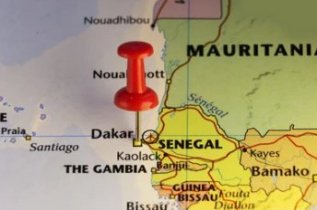 |

|
Experiencing daily life in Dakar is to immerse oneself in a sensory symphony. The city awakens early, with the sounds of street vendors, honking taxis, and the ubiquitous "car rapides" (colorful, often elaborately decorated minibuses) filling the air. Traffic can be legendary, a chaotic ballet of vehicles, pedestrians, and street hawkers, yet somehow, it all functions as part of the city's unique rhythm. Breakfast often consists of freshly baked bread (baguette) with coffee and milk, or "café Touba," a local spiced coffee. Lunch, the main meal, is often shared, with Senegalese staples like Thieboudienne (fish and rice), Yassa (chicken or fish with onions and lemon), or Mafe (meat in peanut sauce) being popular choices. Street food vendors are everywhere, offering everything from grilled corn and brochettes to pastels (fried fish empanadas) and fresh fruit juices. The aroma of spices, grilled fish, and strong coffee drifts through the air, tantalizing the senses. Markets are the pulsating heart of daily life. From the sprawling Sandaga market, teeming with textiles, electronics, and household goods, to the more organized and charming Kermel Market with its beautiful architecture and fresh produce, they offer a fascinating glimpse into local commerce and culture. Bargaining is an expected part of the experience. Evenings often see people strolling along the Corniche, enjoying the sea breeze, or gathering at local cafes and restaurants. Football (soccer) is a national obsession, and local matches or international broadcasts draw passionate crowds. Despite the urban challenges common to large African cities, Dakar's daily life is characterized by resilience, community spirit, and an infectious zest for life. Dakar offers a compelling array of tourist attractions that appeal to a wide range of interests, blending its rich history, vibrant culture, and natural beauty. Gorée Island (Île de Gorée): A UNESCO World Heritage site, this small island (see profile below) just off the coast of Dakar is a must-visit. Its poignant history as a former slave trading post is powerfully conveyed at the House of Slaves (Maison des Esclaves), offering a solemn and moving experience. Beyond its historical significance, Gorée is also a charming, car-free island with colorful colonial architecture, art galleries, and sandy beaches, providing a peaceful escape from the city's hustle. Dakar’s unique blend of historical gravitas, cultural vibrancy, and contemporary dynamism makes it a truly captivating destination. It embodies the spirit of Senegal – a country known for its "Teranga" and its enduring contribution to the African narrative. As it navigates the complexities of rapid urbanization and global integration, Dakar continues to evolve, remaining a beacon of West African identity and progress. To explore Dakar city profile in more depth, check out the links above. |
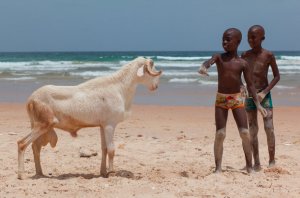 Industry also plays a significant role. Dakar is home to factories producing cement, textiles, food products, chemicals, and pharmaceuticals. Fishing remains a traditional and vital sector, with substantial fish processing plants benefiting from the rich Atlantic waters. Furthermore, tourism is an increasingly important pillar of the economy, generating revenue and creating jobs in hotels, restaurants, and related services, particularly centered around its cultural and historical attractions. The government's focus on improving infrastructure and promoting foreign investment continues to position Dakar as an attractive destination for business and trade in West Africa.
Industry also plays a significant role. Dakar is home to factories producing cement, textiles, food products, chemicals, and pharmaceuticals. Fishing remains a traditional and vital sector, with substantial fish processing plants benefiting from the rich Atlantic waters. Furthermore, tourism is an increasingly important pillar of the economy, generating revenue and creating jobs in hotels, restaurants, and related services, particularly centered around its cultural and historical attractions. The government's focus on improving infrastructure and promoting foreign investment continues to position Dakar as an attractive destination for business and trade in West Africa.
